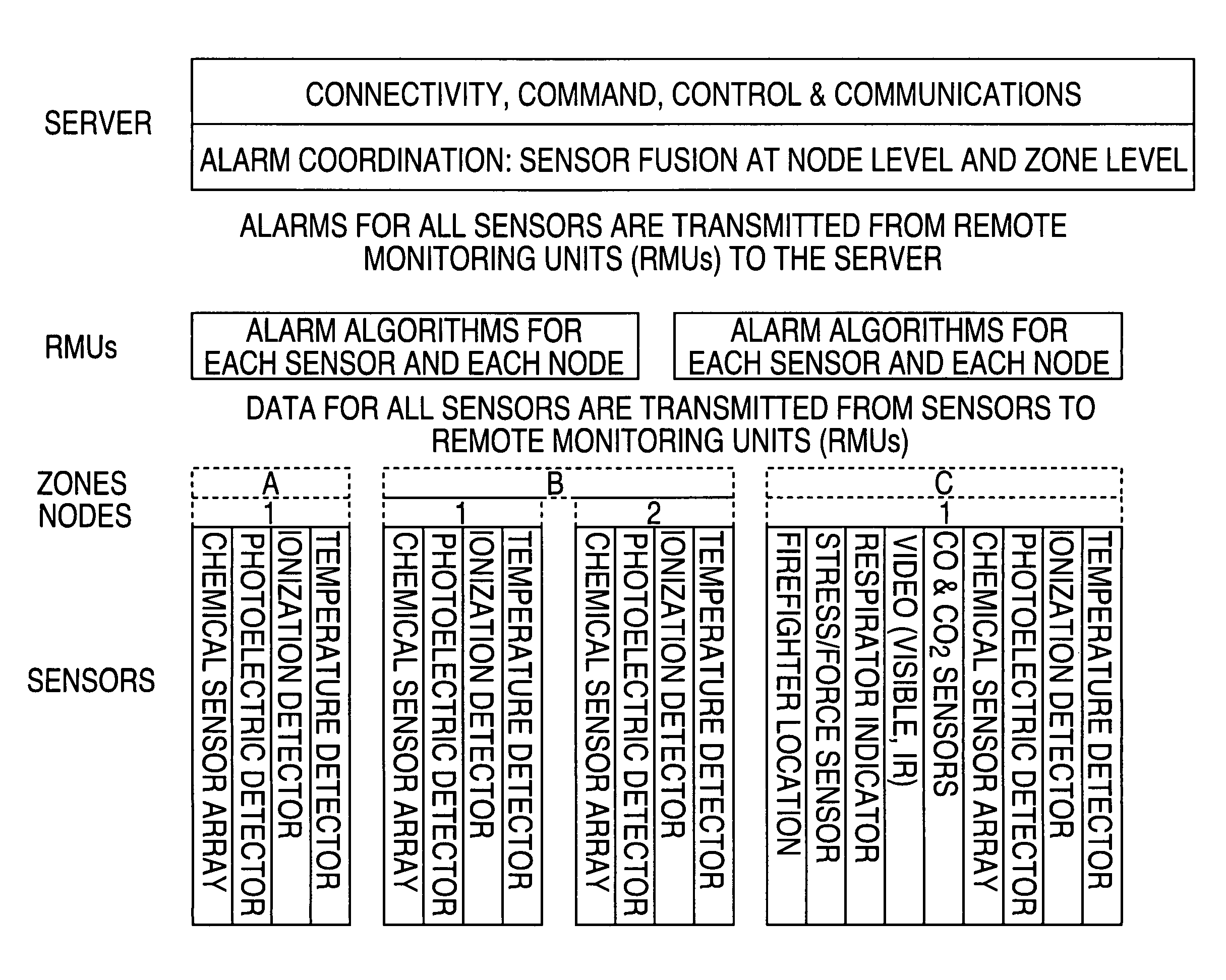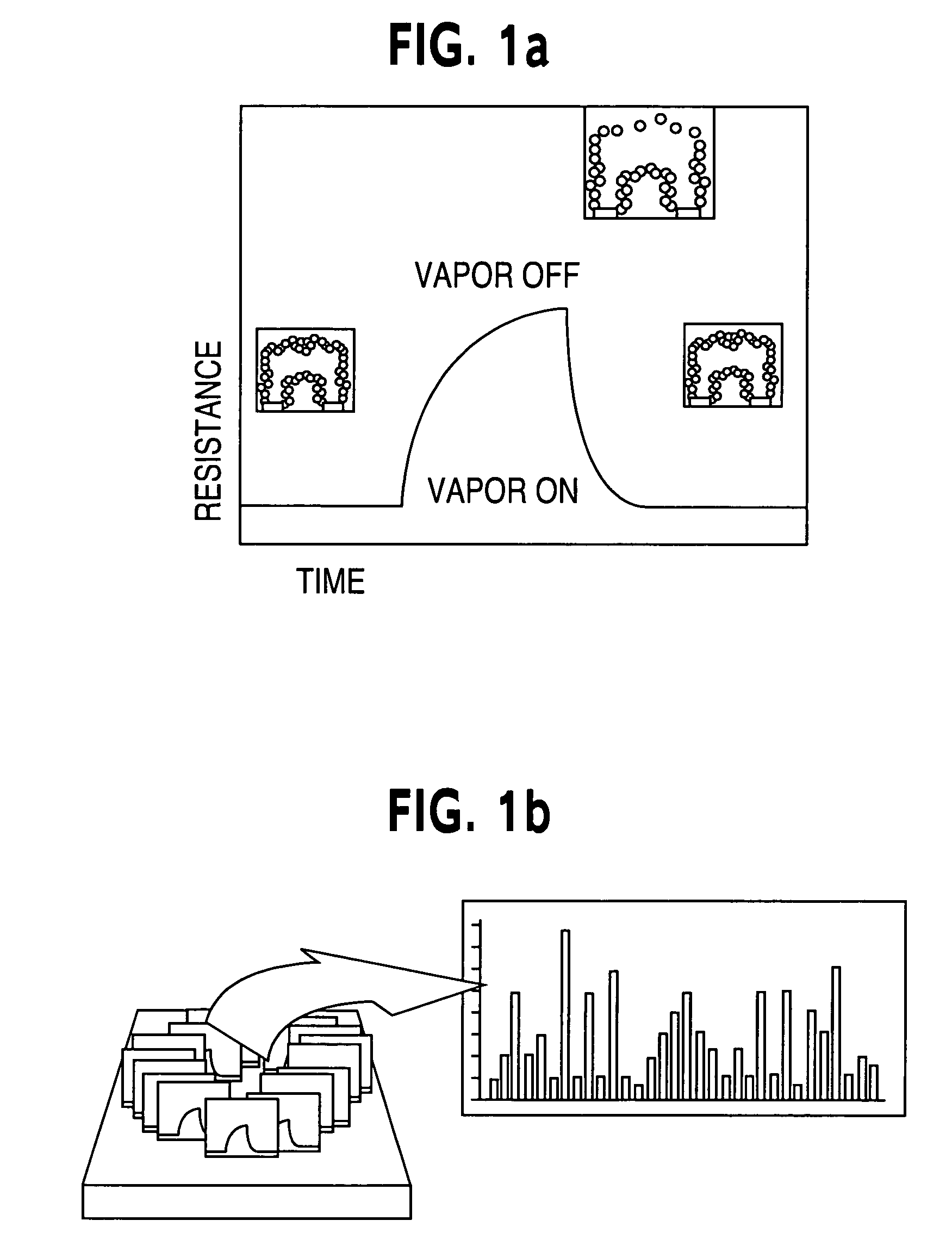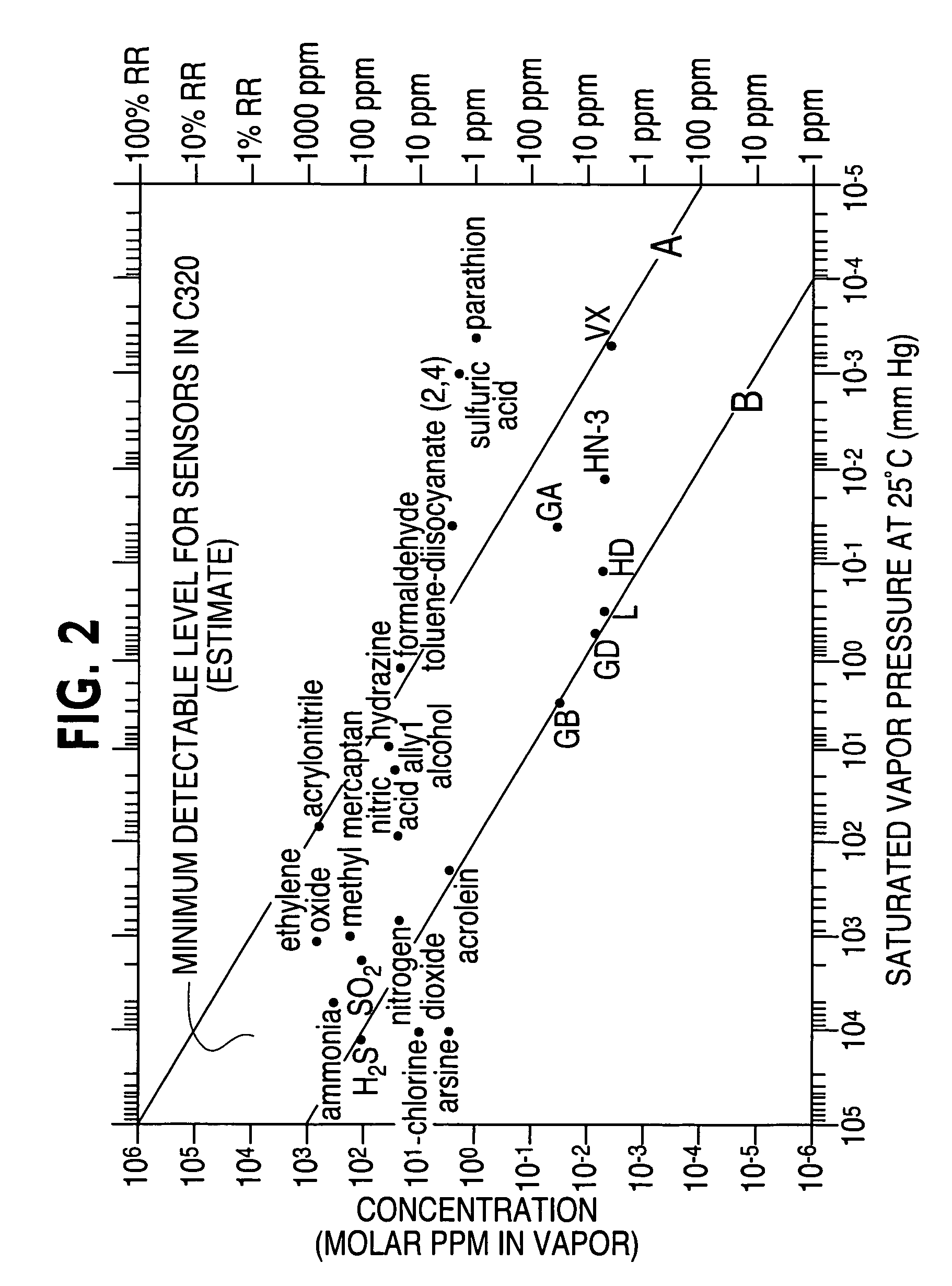Chemical and biological agent sensor array detectors
a technology of chemical and biological agents and array detectors, which is applied in the field of detector systems for chemical and biological sensing, can solve the problems of improvised devices, specialized portable instruments for one threat type, and accidental release of toxic industrial chemicals (tics), etc., and achieve the effect of low power
- Summary
- Abstract
- Description
- Claims
- Application Information
AI Technical Summary
Benefits of technology
Problems solved by technology
Method used
Image
Examples
Embodiment Construction
[0060]The present invention relates to an integrated resistance-based chemical and biological sensing system on a silicon chip. Such chips according to the present invention are advantageously low-cost, low power, small, rapidly responding devices that can detect, classify, quantify, and track a wide variety of chemical and / or biological species in air or other carrier medium. Such devices are able to detect these species at concentrations of up to three orders of magnitude lower than current low-cost sensor technology. These chips are also advantageously consistent with distributed networks, such as low-cost (<$5 per node), self-assembling, wireless networks, such that chemical and biological sensing may become as ubiquitous as temperature and pressure sensing. Such devices result in enhanced safety, improved manufacturing, and a cleaner environment.
[0061]The present invention exploits a number of chemical and biological sensing technologies that are VLSI compatible and which have ...
PUM
| Property | Measurement | Unit |
|---|---|---|
| bias currents | aaaaa | aaaaa |
| humidity | aaaaa | aaaaa |
| temperature | aaaaa | aaaaa |
Abstract
Description
Claims
Application Information
 Login to View More
Login to View More - R&D
- Intellectual Property
- Life Sciences
- Materials
- Tech Scout
- Unparalleled Data Quality
- Higher Quality Content
- 60% Fewer Hallucinations
Browse by: Latest US Patents, China's latest patents, Technical Efficacy Thesaurus, Application Domain, Technology Topic, Popular Technical Reports.
© 2025 PatSnap. All rights reserved.Legal|Privacy policy|Modern Slavery Act Transparency Statement|Sitemap|About US| Contact US: help@patsnap.com



